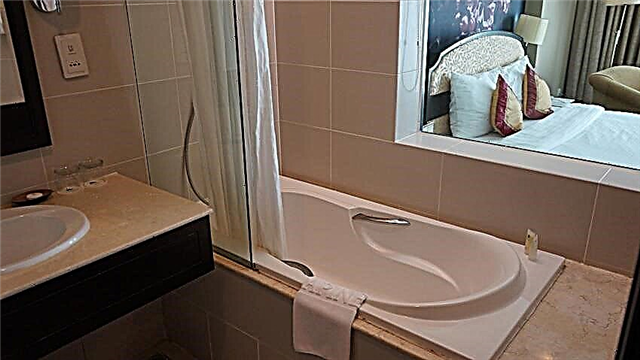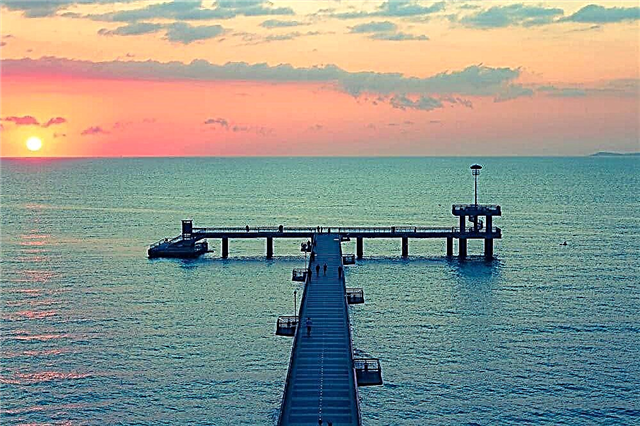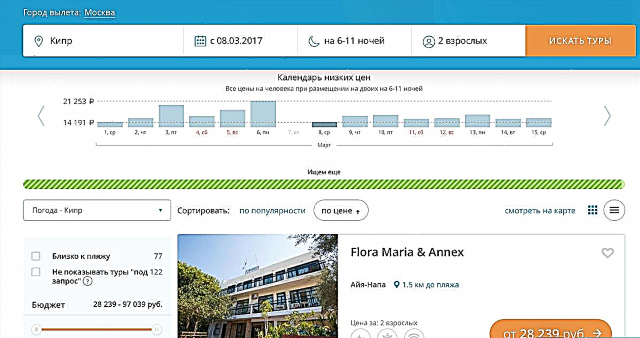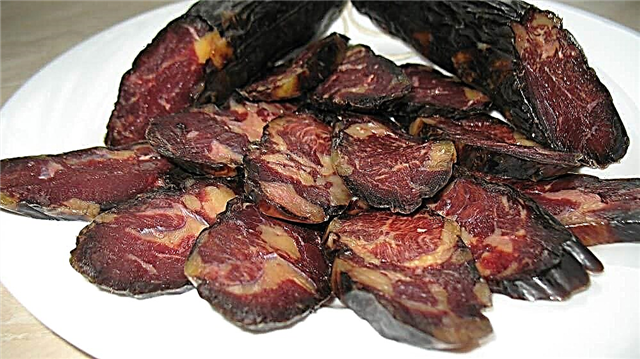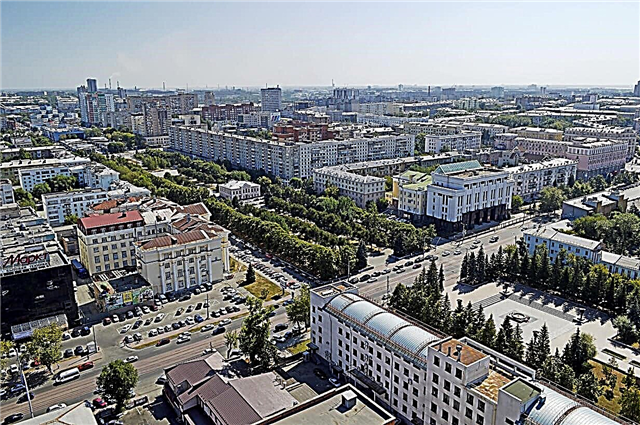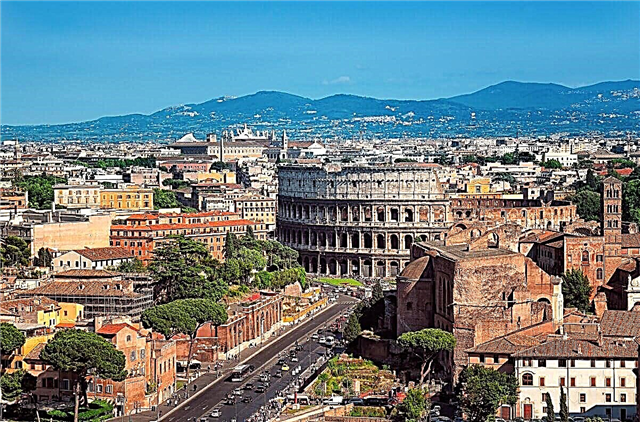Italy belongs to the list of countries for which tourism is an important component of the economy. The industry generates significant income, as it satisfies the most diverse needs of guests of the state. There is something to see here for lovers of architecture and antiquity: from Rome to Florence, where unique sights of the past have been preserved.
Inveterate romantics visit Venice and Verona without fail. Fans of serene relaxation can easily choose one of the beaches of Positano. Gourmets and wine lovers alike will appreciate the Sorrento cuisine. Religious tourism, such as pilgrimages to the Vatican, plays an important role in the list. Developed infrastructure helps to get to exotic corners and enjoy comfort even in provincial Italy.
The main tourist cities of Italy
List of the most popular cities for cultural tourism.
Rome
All roads, as you know, lead to Rome - a city where history and modernity collided and tightly intertwined. The oldest European aqueduct, the Colosseum, the Pantheon, many iconic squares and more than nine hundred churches are located here. Since ancient times, there has been a rather small area of urban development, especially when compared with other capitals. Another feature is that it is good to come here at any time of the year.
Population - 2 872 800 people (2018)

Venice
The fact that Venice is slowly sinking under water only adds to the popularity of the city. More than a hundred islands have become a single whole, and it is customary to move between them on gondolas or river trams. Numerous bridges and frescoes are the main attractions of the city, where every little thing is associated with an important stage in history. It also hosts the Venice Film Festival, a status event on a global scale.
Population - 259 939 people (2019)

Milan
Milan does not get tired of competing with the capital for the title of the most popular city in the country. In addition to architectural landmarks from the past, there are plenty of modern trends. Milan is the center of high fashion. Fashion shows by famous designers and simple shopping attract tourists every year. Teatro alla Scala does not give up its positions for many decades. And football is the second religion for local and visiting fans.
Population - 1 366 180 people (2018)

Florence
Created as a cultural and commercial center, Florence continues to be so. At different times, outstanding citizens of Italy lived and worked here: da Vinci, Galileo, Michelangelo, Dante and others. Galleries, cathedrals, palaces and squares are the main targets of tourist groups. They introduce the spirit of the city, which is quite cozy and green, given the density of buildings.
Population - 380 948 people (2018)

Sorrento
Another Italian city located on the coast. Its development was influenced by different peoples and countries, so there is enough color here. Visitors take with them porcelain figurines produced by a small manufactory and liqueurs. Neapolitan music, popular all over the world, was born here. Seafood dishes and olives grown nearby are the hallmark of the region.
Population - 16 405 people (2018)

Verona
Verona owes its popularity primarily to Shakespeare. The fictional heroes of his "Romeo and Juliet" made the city one of the romantic centers of the world. Another reason for the endless tourist flow is architecture. Several eras and styles coexist perfectly side by side. The streets are lined with ancient Roman and medieval buildings and monuments, as well as churches and palaces of later periods.
Population - 257 993 people (2018)

Positano
After World War II, many artists from different countries, including the USSR and Germany, moved here. They attracted the attention of the world community to the city. Sunny weather, mountainous scenery and long beaches keep tourists coming all year round. The commune is a great place for a sedate relaxation: leisurely walks, a couple of hours on a sunbed and local cuisine.
Population - 3 913 people (2018)

Naples
The close location of Naples to Vesuvius does not bother tourists at all. But the criminal situation on the streets is overgrown with legends and may scare off some potential guests of the city. Naples is the birthplace of special music and pizza. The proximity of modernity and architectural monuments of different periods is very noticeable here. The resulting contrast is the highlight of a region that stands for diversity.
Population - 956 183 people (2019)

Turin
The fourth most populous city in Italy. Several of the local palazzo and castles are included in the UNESCO heritage list. The Shroud of Christ is kept in the Cathedral of John the Baptist. The museum of Egyptian culture, which, however, has become popular, stands out from the general ensemble. Football plays an important role in the life of the city, since the Juventus club is based in Turin.
Population - 875 698 people (2019)

Palermo
The Royal Palace of Palermo is a multitude of styles brought together: the Arabic approach, the work of the masters of Constantinople, the symbiosis of wood and stone, not to mention the uniqueness of the interior decoration. The city has about three hundred churches, cathedrals and former monasteries. They also belong to different eras. A gloomy but unique attraction is an underground cemetery with eight thousand graves.
Population - 663 770 people (2018)

Ischia
A small volcanic island located in the Gulf of Naples. Most of the attractions here are natural, but there is an exception - the ancient fortress, rebuilt into the Aragonese castle. Tourists are more attracted by thermal springs, a medical resort that uses them, as well as sulphide silt mud, a botanical garden and volcanic emissions of water vapor.
Population - 62,027 people (2009)

Bologna
Despite the constant development and expansion, Bologna has retained the atmosphere of the old city. The local university is one of the most respected in Europe. Tourists never miss the numerous squares with their arches, unique architecture and monuments. In the vicinity of the city, there is a monumental cemetery that looks more like an object of art.
Population - 389 261 people (2018)

Genoa
The largest port in Italy is located in Genoa. Palazzi dei Rolli is part of the UNESCO World Heritage Site. The architecture is largely inherent in a typical city in the north of the country. The surroundings are rich in interesting places. The largest aquarium in Europe is located here. And the marble tombstones of the Staglieno cemetery are no less valuable and majestic than the city monuments.
Population - 580 097 people (2018)

Cagliari
The historic center of Cagliari will not leave anyone indifferent. Along with the monuments of architecture, you can find modern shops, cozy restaurants with local cuisine and wines. The Archaeological Museum will allow you to get a closer look at the history of the region. There is also a botanical garden and art festivals. The rest of the time tourists spend mostly on the beaches, if the weather permits.
Population - 154 267 people (2018)
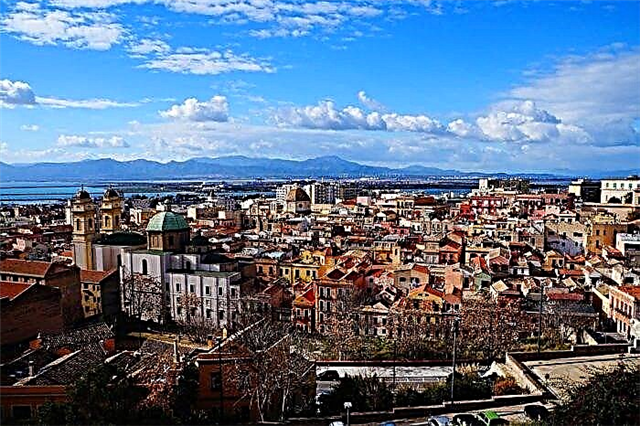
Catania
Catania is located at the foot of Mount Etna. The city was rebuilt mainly in the Baroque style of dark volcanic stone. Cathedral Square is the heart of Catania. Wide and narrow streets diverge from it, where you can chaotically meet churches, fountains, statues and other beauties. The fish market is an addition to the local flavor that stands out from the general decor.
Population - 311 584 people (2019)
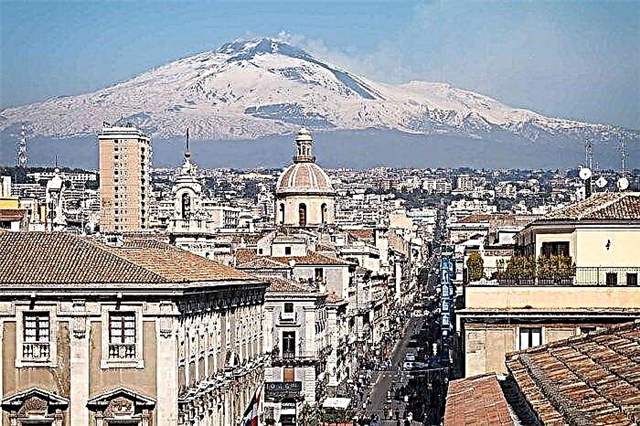
Syracuse
There are not many historical monuments in Syracuse.The most important of them can be bypassed in less than one day. These include Piazza Arcimede, Syracuse Cathedral, Temple of Apollo, Aretusa Fountain, Grotticelli Necropolis, Maniace Castle, Gothic Theater and others. There are museums here, focused on different time layers. The city is also famous for its drama festival, which takes place in May and June.
Population - 121 171 people (2019)

Pisa
It's not just a leaning tower. Numerous palaces, cathedrals and simpler buildings decorated with frescoes, as well as galleries created during the heyday of the Medici family - this is the true face of the city. Local cuisine will put the gourmet taste buds to the test, as it is often spicy and aromatic. Pisa is quieter than other tourist centers. It is less crowded, but in demand.
Population - 90 118 people (2018)

Lucca
A city for those who like to follow not only all the famous tourist routes. In the middle of the Serka river plain, you can admire nature and sights and avoid the hustle and bustle of megacities. The local pride is the Guinigi Tower with its oaks growing directly on the upper platform. Fortress walls and fortifications are better preserved here than in any city in Italy.
Population - 89 243 people (2018)

Padua
The outskirts of Padua are the concentration of villas that once belonged to the Venetians. The city itself is home to the remains of St. Luke, the author of one of the Gospels. Astronomy lovers will be able to examine in detail the numerous frescoes on this topic. The palace and protective redoubts are also perfectly preserved and accessible to the public. And the botanical garden of Padua is on the list of UNESCO monuments.
Population - 212 224 people (2019)

Rimini
The city is considered to be the center of the Roman Riviera. Rimini has many beaches with rich entertainment programs and parks within walking distance. The cuisine is simple and at the same time colorful: Parma ham and mortadella sausage are beyond competition. Lovers of antiquities can explore the ruins of the amphitheater or the arched bridge from the time of Tiberius. There are churches here, one of them contains part of the relics of St. Nicholas the Wonderworker.
Population - 150 590 people (2018)

Trieste
Outwardly, it looks quite modern, although some prints of past centuries have been preserved in it. Tourists are interested in the ruins of ancient Greek buildings, tombs of applicants to the Spanish throne, several castles, one of which was built on the basis of a Venetian fortress. Trieste beach is divided for holidaymakers by gender, which is an exceptional case for Europe.
Population - 204 338 people (2018)

Lecce
The buildings in Lecce are invariably flashy. It doesn't matter what period of construction they belong to, there is something attractive in the architecture of the entire city. The antique amphitheater does not stand idle: artists still give performances in it. The Basilica of Santa Croce is slightly more modest in appearance, but the interior painting is striking. Politeama Greco is an old theater with great sound. As for the cuisine: it is traditionally "poor", simple and satisfying.
Population - 95 269 people (2018)

San Gimignano
The development of San Gimignano largely stalled in the Middle Ages in terms of expansion and building density. Well-preserved walls and stone towers, from a distance, look like skyscrapers. There are fourteen of them in total, the highest reaching fifty meters. The historical center of the city is rich in frescoes and amazing buildings from different periods. And the local museum consists of ten galleries.
Population - 7 743 people (2018)
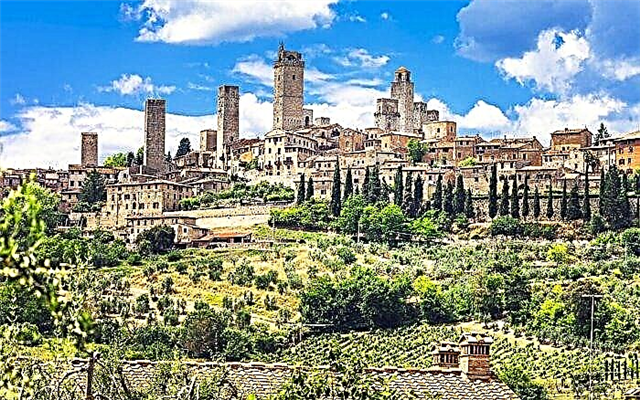
Salerno
A seaside town with a rich history. The mild climate allows you to relax on the sea almost all year round, albeit in different capacities. The indigenous people are hospitable and like to bargain. There is a whole street dedicated to selling souvenirs and other shops. The sights are varied: numerous palaces, the Mercatello park, Minerva's garden, fragments of an ancient waterfall, the Areca fortress and others.
Population - 133 970 people (2018)

Perugia
A picturesque city surrounded by greenery. The panorama of the area is impressive, but in fact the streets here are quite narrow. There is little architecture that is historically valuable. Although there are churches built in different centuries. The St. Lawrence Cathedral houses the wedding ring of the Virgin Mary. The many shops open throughout the city add to the noise. Locals love to hold festivals.
Population - 166 189 people (2019)

Sienna
The center of Siena is protected by UNESCO as a World Heritage Site. The old town is perfectly preserved, its narrow streets and cramped buildings are the face of the region. It is in Siena that the Palio festival is held - a horse race in the square between the Siena contrades. The event is divided into two dates. A school of painting of the same name, which has its own traditions, was born in the city.
Population - 53 901 people (2018)

Taormina
In Taormina, you can find something amazing and ancient at every step. Most of the churches were built between the 15th and 17th centuries. The Greek theater, naumachy and odeon are well preserved, and the latter has geographical features of its location that distinguish it from similar structures. The squares, castles and towers are in a different state: some are fully functional, some are in need of reconstruction.
Population - 10 872 people (2018)

Bergamo
The city is divided into two halves: old and new. They are located at different heights and are connected by a funicular. Bergamo has many attractions: the fortress wall, the Colleoni Chapel, the Baptistery, the Covered Staircase, the City Palace and others. It is noteworthy that with such a rich and varied collection of interesting objects, the city is not included in most tourist routes.
Population - 121 896 people (2019)

Cinque Terre
The union of five settlements has received a common name - Cinque Terre. Car traffic is almost completely prohibited here. In one of the villages it is allowed, but with restrictions. Must-see sights include the impressive statue of Neptune, the Aurora Tower, the local pastry shop and wine cooperative, the Capuchin monastery and the trail of love. Walking between them it is worth admiring the beauty of nature.

Vatican
The Vatican City State is the seat of the Pope. Pilgrims flock to the enclave ruled by the Holy See from all over the world, regardless of their religion. The main attractions are predictably associated with Catholicism: St. Peter's Basilica, Sistine Chapel, Vatican Library and others. The city is also interesting for its decoration and traditions. There are few residents here, and they have special passports.
Population - 842 people (2017)


